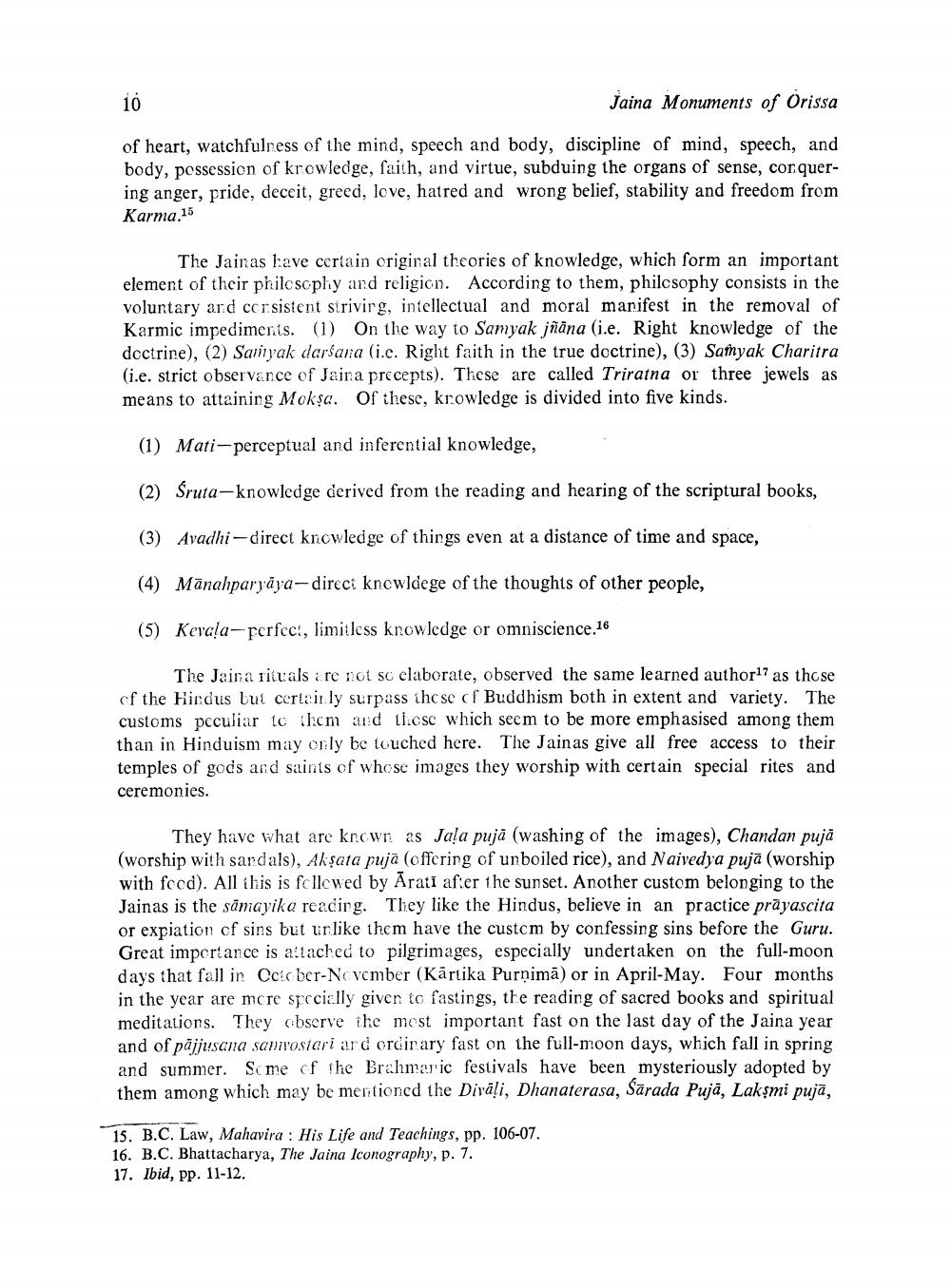________________
10
Jaina Monuments of Orissa
of heart, watchfulness of the mind, speech and body, discipline of mind, speech, and body, possession of krowledge, faith, and virtue, subduing the organs of sense, cor quering anger, pride, deceit, greed, love, hatred and wrong belief, stability and freedom from Karma.15
The Jainas have certain original theories of knowledge, which form an important element of their philosophy and religion. According to them, philosophy consists in the voluntary and corsistent strivirg, intellectual and moral manifest in the removal of Karmic impediments. (1) On the way to Samyak jñāna (i.e. Right knowledge of the doctrine), (2) Saiiyak darśana (i.e. Right faith in the true doctrine), (3) Samyak Charitra (i.e. strict observance of Jaina precepts). These are called Triratna or three jewels as means to attaining Mokşa. Of these, krowledge is divided into five kinds.
(1) Mati-perceptual and inferential knowledge,
(2) Śruta-knowledge derived from the reading and hearing of the scriptural books,
(3) Avadhi- direct knowledge of things even at a distance of time and space,
(4) Mānahparyāya-- direct knowldege of the thoughts of other people,
(5) Kevala-perfect, limitless knowledge or omniscience.16
The Jaina rituals are not so claborate, observed the same learned author17 as those cf the Hirdus Lut certainly surpass those of Buddhism both in extent and variety. The customs peculiar to them and these which seem to be more emphasised among them than in Hinduism may only be touched here. The Jainas give all free access to their temples of gods and saints of whose images they worship with certain special rites and ceremonies.
They have what are known as Jala pujā (washing of the images), Chandan pujā (worship with sandals), Akşata puja (offering of unboiled rice), and Naivedya pujā (worship with food). All this is followed by Arati after the sunset. Another custom belonging to the Jainas is the samayike reading. They like the Hindus, believe in an practice prāyascita or expiation of sins but unlike them have the custom by confessing sins before the Guru. Great impertance is attached to pilgrimages, especially undertaken on the full-moon days that fall in October-November (Kārtika Purnimā) or in April-May. Four months in the year are more specially given to fastings, the reading of sacred books and spiritual meditations. They observe ihe most important fast on the last day of the Jaina year and of pājjusana sanirostari ard ordinary fast on the full-moon days, which fall in spring and summer. Some of the Brahmaric festivals have been mysteriously adopted by them among which may be mentioned the Dirāli, Dhanaterasa, Sārada Pujā, Lakşmi pujā,
15. B.C. Law, Mahavira : His Life and Teachings, pp. 106-07. 16. B.C. Bhattacharya, The Jaina Iconography, p. 7. 17. Ibid, pp. 11-12.




